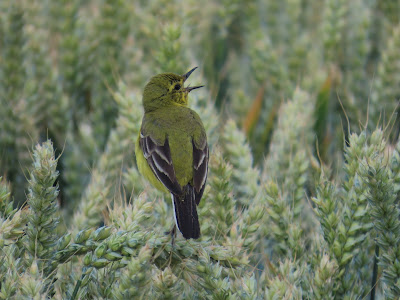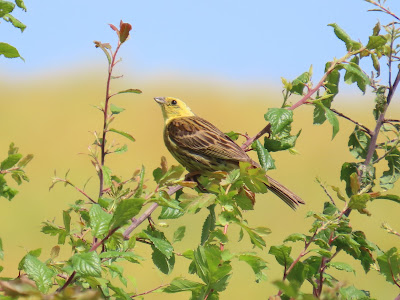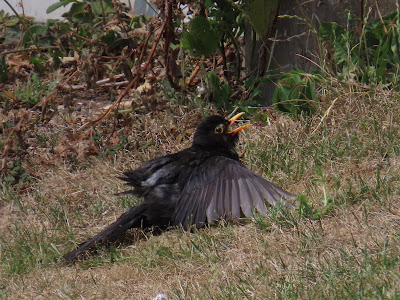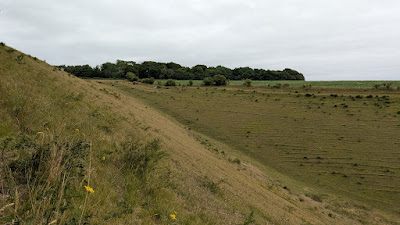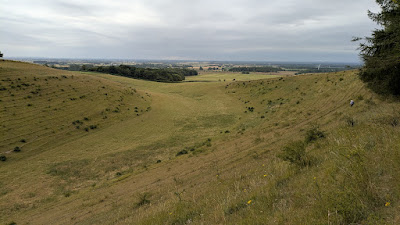I walk on the roadside by Withernsea Sands holiday village and take a left public right of way towards Rimswell Valley and then Rimswell. The footpath weaves around arable fields, mostly of wheat, with some barley and many with broad margins, which are buzzing with butterflies, hoverflies and bumblebees. A section after a derelict bridge is on a paddock overgrown with hogweed and brambles. Then I come out by Port Natal house, and a surfaced track. A woman walking her dog asks where I'm walking. I mention how few people I encounter in these walks and the solitude and she says 'you can hear a pin drop!'. I concur!
Rimswell is a small village, along a street, Church Road. Two horses follow a cat along a field, while a Rabbit watches. Swallows and House Sparrow chirp from wires and roofs. A Buzzard calls.
Rabbit at Rimswell.
I get to Roos at midday and I'm very pleased by its many mature trees. The church grounds have large lime trees and beeches. A bench is in the full sunshine, so I sit on the steps to have my snacks listening to a Goldcrest singing from the yew trees. A Robin emerges with some prey (a lacewing, I think) in its bill and does a bit of basking. Later I spot a Blackbird basking too. Roos is quite a large village, extending mainly north to south. I walk north, taking photos of the Swifts and Housemartins, and then take a narrow footpath heading towards Tunstall, along fields.
It's getting warmer as I get to Tunstall by the main road. After a short walk to the churchyard, I take Seaside Lane to the bus stop at Sand-le-Mere. I have an hour until the next bus so I check the ponds out. Green-veined and Small White butterflies lick salts by a pond, while four or five males Black-tailed Skimmers chase over the water, one of them catches a female and they mate. All through the walk today, hundreds or thousands of thrips filled the air, landing in dozens on my face and arms. I take the Swifts and Swallows are scooping them out.












